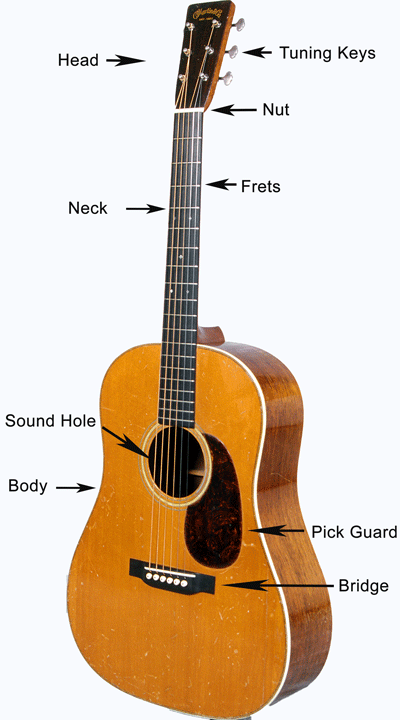
The sections of the guitar resemble the upper part of the human body. There is a head, neck and a body. We will cover these sections separately:
The role of the head is to anchor the strings and provide a method of tuning.
This is done by the tuning keys or machine heads which are used to adjust the pitch of each string individually.
The neck is the section that runs between the head and the body.
The fingerboard that runs along the top of the neck is used to shorten the length of the strings by pressing them against the metal frets.
At the top of the fingerboard the strings run across a small piece of material (either plastic, bone or synthetic material) called the nut on their way to the tuning keys.
The body of the acoustic guitar is constructed like a box with sides and a back made out of a rather dense timber supporting a top soundboard made out of a thinner more pliable timber, either solid spruce or jacaranda on hand made instruments or plywood on more affordable instruments.
Because the top of the guitar is so thin, it is reinforced with strutting on the underside to support the string tension applied by the strings through the bridge.
The bridge anchors the strings to the body. The strings run from the bridge bone (piece of bone or plastic) over the fingerboard to the nut, and then on to the tuning keys.
The string length from the bridge bone to the nut is called the scale length. The shortening of the string length by pressing the string against the frets produces the various pitches of the musical scale.
SHARE THIS PAGE!